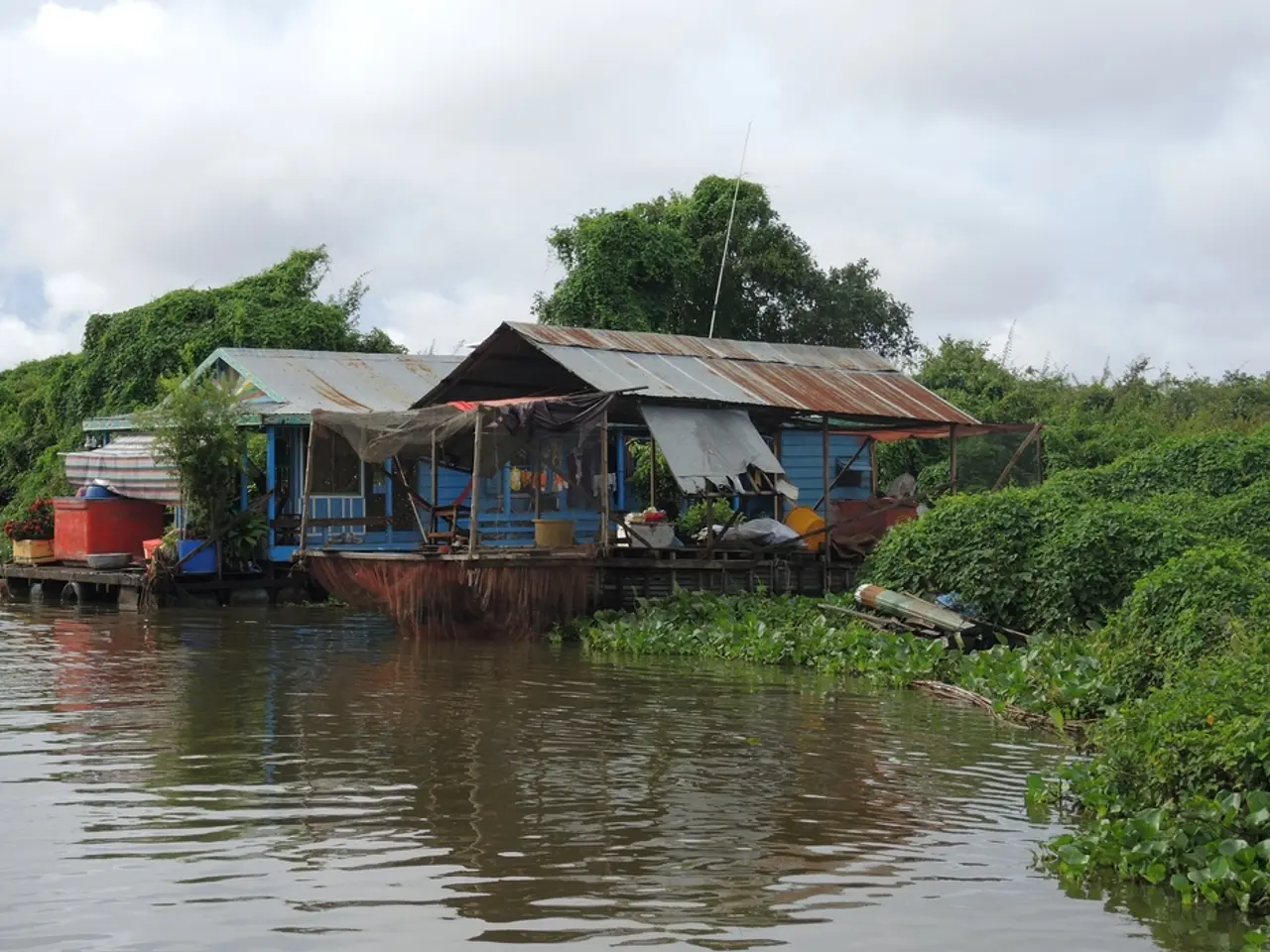Challenges and Resilience Pathways of Globs in the Indian Himalaya: Cross-Border Issues
In the face of increasing glacial lake outburst floods (GLOFs) in the Indian Himalayas, the National Glacial Lake Outburst Flood Risk Mitigation Programme (NGRMP) has been established to combat this growing threat. This comprehensive, multi-faceted strategy aims to reduce the risks associated with GLOFs through risk assessment, monitoring, early warning, structural mitigation, and community preparedness.
Key aspects of NGRMP include:
- Risk Identification and Prioritisation: The programme initially focused on 56 high-risk glacial lakes but has since expanded to cover 195 lakes across Arunachal Pradesh, Himachal Pradesh, Sikkim, and Uttarakhand, ranked according to their risk levels.
- Scientific Hazard Assessment: Multi-institutional field expeditions conduct detailed surveys, including bathymetry, slope stability studies, and Electrical Resistivity Tomography to evaluate lake volume and the stability of moraine dams.
- Deployment of Monitoring Technology: Automated Weather and Water Stations (AWWS) are installed at key glacial lakes, providing real-time data on weather and water conditions.
- Early Warning Systems (EWS): Downstream early warning systems alert vulnerable communities of potential GLOF events, enabling timely evacuation and disaster response.
- Risk Mitigation Infrastructure: Engineering measures such as controlled water drawdown or construction of retention structures help reduce pressure on moraine dams, lowering the chance of sudden lake outburst.
- Community Engagement: Awareness and training programs coordinate via the Committee on Disaster Risk Reduction (CoDRR) under the National Disaster Management Authority (NDMA) to build preparedness and resilience among local populations in vulnerable regions.
- Interagency and Multi-Disciplinary Coordination: CoDRR ensures collaboration between central government agencies, research institutions, and Himalayan states for effective monitoring and mitigation efforts.
- Funding and Scale: The programme is backed by a financial outlay of approximately Rs. 150 crore (about $20 million) and represents a shift from reactive post-disaster response to proactive risk reduction and climate adaptation strategy.
Recent examples of GLOFs include the South Lhonak in Sikkim (2023) and Chorabari Kedarnath in Uttarakhand (2013), with the latter resulting in over 5,700 deaths and the former causing a $2 billion loss due to the Teesta III dam. The 2025 Lehende-Khola flood highlighted the absence of a China-Nepal-India Cryosphere Alert Protocol, underscoring the need for trans-boundary cooperation.
However, challenges remain, such as logistics and altitude physiology, which limit fieldwork to less than 6 weeks annually, and the lack of a dedicated permafrost observatory network, hampering dam-failure prediction models. Fragmented mandates among twelve central agencies create coordination bottlenecks, while trans-boundary data gaps persist due to upstream nations holding satellite and hydrological data close, stalling early warnings.
The Himalayan Climate Resilience Fund aims to avert $20 billion in downstream losses, create 50,000 green-tech jobs in mountain states, and make India the global test-bed for climate-proof alpine development. The NGRMP, accelerated by the NDMA, represents a critical step towards addressing the mounting threats posed by climate change and glacier dynamics in the Indian Himalayas.
- The Himalayan Climate Resilience Fund, aiming to avert $20 billion in downstream losses, recognizes the importance of the National Glacial Lake Outburst Flood Risk Mitigation Programme (NGRMP) as a crucial step in combating the threats posed by climate change and glacier dynamics in the Indian Himalayas.
- To effectively reduce the risks associated with glacial lake outburst floods (GLOFs), the NGRMP has prioritized high-risk lakes, using environmental-science methods like bathymetry and Electrical Resistivity Tomography to assess their stability and potential for floods, which are significant factors impacting health-and-wellness and the environment.
- In the face of climate-change-induced GLOFs and the need for trans-boundary cooperation, the deployment of Early Warning Systems (EWS) in key glacial lakes, such as South Lhonak in Sikkim and Chorabari Kedarnath in Uttarakhand, is essential for science-based decision-making, ensuring the protection of both people and the mains infrastructures from the potential devastation of these flood events.




